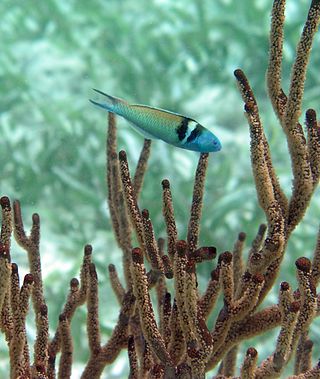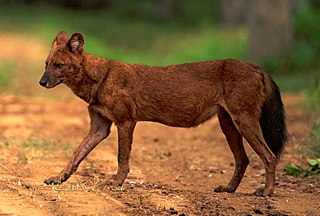
A national park is a nature park designated for conservation purposes because of unparalleled national natural, historic, or cultural significance. It is an area of natural, semi-natural, or developed land that is protected and owned by a government. Although governments hold different standards for national park designation, the conservation of 'wild nature' for posterity and as a symbol of national pride is a common motivation for the continued protection of all national parks around the world. National parks are almost always accessible to the public. Usually national parks are developed, owned and managed by national governments, though in some countries with federal or devolved forms of government, "national parks" may be the responsibility of subnational, regional, or local authorities.
The conservation movement, also known as nature conservation, is a political, environmental, and social movement that seeks to manage and protect natural resources, including animal, fungus, and plant species as well as their habitat for the future. Conservationists are concerned with leaving the environment in a better state than the condition they found it in. Evidence-based conservation seeks to use high quality scientific evidence to make conservation efforts more effective.

The Great Barrier Reef is the world's largest coral reef system, composed of over 2,900 individual reefs and 900 islands stretching for over 2,300 kilometres (1,400 mi) over an area of approximately 344,400 square kilometres (133,000 sq mi). The reef is located in the Coral Sea, off the coast of Queensland, Australia, separated from the coast by a channel 160 kilometres (100 mi) wide in places and over 61 metres (200 ft) deep. The Great Barrier Reef can be seen from outer space and is the world's biggest single structure made by living organisms. This reef structure is composed of and built by billions of tiny organisms, known as coral polyps. It supports a wide diversity of life and was selected as a World Heritage Site in 1981. CNN labelled it one of the Seven Natural Wonders of the World in 1997. Australian World Heritage places included it in its list in 2007. The Queensland National Trust named it a state icon of Queensland in 2006.

Ecotourism is a form of tourism marketed as "responsible" travel to natural areas, conserving the environment, and improving the well-being of the local people. The stated purpose may be to educate the traveler, to provide funds for ecological conservation, to directly benefit the economic development and political empowerment of local communities, or to foster respect for different cultures and human rights.

Nature conservation is the moral philosophy and conservation movement focused on protecting species from extinction, maintaining and restoring habitats, enhancing ecosystem services, and protecting biological diversity. A range of values underlie conservation, which can be guided by biocentrism, anthropocentrism, ecocentrism, and sentientism, environmental ideologies that inform ecocultural practices and identities. There has recently been a movement towards evidence-based conservation which calls for greater use of scientific evidence to improve the effectiveness of conservation efforts. As of 2018 15% of land and 7.3% of the oceans were protected. Many environmentalists set a target of protecting 30% of land and marine territory by 2030. In 2021, 16.64% of land and 7.9% of the oceans were protected. The 2022 IPCC report on climate impacts and adaptation, underlines the need to conserve 30% to 50% of the Earth's land, freshwater and ocean areas – echoing the 30% goal of the U.N.'s Convention on Biodiversity.

The International Union for Conservation of Nature (IUCN) is an international organization working in the field of nature conservation and sustainable use of natural resources. Founded in 1948, IUCN has become the global authority on the status of the natural world and the measures needed to safeguard it. It is involved in data gathering and analysis, research, field projects, advocacy, and education. IUCN's mission is to "influence, encourage and assist societies throughout the world to conserve nature and to ensure that any use of natural resources is equitable and ecologically sustainable".

Habitat conservation is a management practice that seeks to conserve, protect and restore habitats and prevent species extinction, fragmentation or reduction in range. It is a priority of many groups that cannot be easily characterized in terms of any one ideology.

Environmental protection is the practice of protecting the natural environment by individuals, groups and governments. Its objectives are to conserve natural resources and the existing natural environment and, where it is possible, to repair damage and reverse trends.

Wilderness or wildlands are natural environments on Earth that have not been significantly modified by human activity, or any nonurbanized land not under extensive agricultural cultivation. The term has traditionally referred to terrestrial environments, though growing attention is being placed on marine wilderness. Recent maps of wilderness suggest it covers roughly one-quarter of Earth's terrestrial surface, but is being rapidly degraded by human activity. Even less wilderness remains in the ocean, with only 13.2% free from intense human activity.

National parks of Canada are vast natural spaces throughout the country that are protected by Parks Canada, a government agency. Parks Canada manages the National Parks and Reserves in order to educate visitors, keep them safe, and ensure public enjoyment in ways that do not compromise the area for future generations. Protections include the management of Canadian wildlife and habitat within the ecosystems of the park. Within Parks Canada's governance is a wide range of protected areas, encompassing National Historic Sites, National Marine Conservation Areas (NMCA), and national park reserves. Canada established its first national park in Banff in 1885, and has since expanded its national park system to include 37 national parks and 10 national park reserves.

Emeritus Professor Harry Frederick Recher RZS (NSW) AM is an Australian ecologist, ornithologist and advocate for conservation.

Since declaring independence in 1981, Belize has enacted many environmental protection laws aimed at the preservation of the country's natural and cultural heritage, as well as its wealth of natural resources. These acts have established a number of different types of protected areas, with each category having its own set of regulations dictating public access, resource extraction, land use and ownership.

The World Commission on Protected Areas (WCPA) is one of six commissions of the International Union for Conservation of Nature (IUCN).
Lee Hannah is a conservation ecologist and a Senior Researcher in Climate Change Biology at Conservation International. Hannah is one of many authors who published an article predicting that between 15% and 37% of species are at risk of extinction due to climate change caused by human greenhouse gas emissions.

An endangered species is a species that is very likely to become extinct in the near future, either worldwide or in a particular political jurisdiction. Endangered species may be at risk due to factors such as habitat loss, poaching, invasive species, and climate change. The International Union for Conservation of Nature (IUCN) Red List lists the global conservation status of many species, and various other agencies assess the status of species within particular areas. Many nations have laws that protect conservation-reliant species which, for example, forbid hunting, restrict land development, or create protected areas. Some endangered species are the target of extensive conservation efforts such as captive breeding and habitat restoration.
Andrew Balmford is a professor of conservation science at the University of Cambridge. His research focuses on planning conservation, comparing the costs and benefits of conservation and how conservation can be reconciled with other activities.
The Okomu National Park, formerly the Okomu Wildlife Sanctuary, has been identified as one of the largest remaining natural rainforest ecosystem. Due to the high biodiversity seen in the Okomu National Park, a Wildlife Sanctuary was first established there.
Penelope Figgis is an Australian environmentalist, activist, and political scientist. Since 2005 she has been the Vice Chair for Oceania of the IUCN World Commission on Protected Areas.












